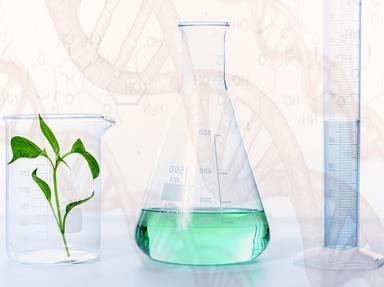Quiz Answer Key and Fun Facts
1. Imagine a lovely beach scene: sand, surf, and some salt crusting the sheer black cliffs that rise up from the water like, um, something majestically metaphorical. Naturally, the first thing you would think of is CHEMISTRY! Which of the substances in that image is water-soluble?
2. Calcium carbonate is a common enough substance, be it the lovely minerals calcite and aragonite, the elegant shell of an egg or an oyster, a stately marble floor, or that nasty whitish crud around your faucet. So, tell me. Is calcium carbonate (CaCO3) easily water-soluble?
3. Most ore minerals, say, pyrite, galena, chalcopyrite, cinnabar, sphalerite, and so on, contain which usually insoluble anion?
4. If you have ever had the pleasure of intestinal problems, your doctor may have given you a "barium enema." One swallows an artificially-flavored concoction of barium sulfate (BaSO4), waits for a certain period of time, and gets an abdominal X-ray. The barium reflects X-rays, and your intestines show up for all the world to see. Now, the barium ion, Ba+2, is very, very toxic. Do you think that barium sulfate is soluble in water?
5. Those last questions were far too interesting. This one needs to be boring. Really, really dry. All right. Compounds of which of the following polyatomic ions are almost always SOLUBLE in water?
6. Of course, there are different degrees of solubility. Of the following salts of silver, which one is the MOST soluble in water?
7. Water is not always the best choice of solvent. What kind of nonpolar solvent can be used to dissolve Buckminsterfullerenes, aka Buckyballs, the soccer-ball-shaped carbon molecules?
8. Why limit ourselves to solids dissolving in water? Gasses can dissolve in liquids as well. I'll refrain from asking the tried-and-true question about carbon dioxide dissolved in soft drinks to create the fizz. Instead, um, if you want to chlorinate your swimm-- oh, that was too obvious. A compound made from what gas do water treatment plants usually dissolve in city drinking water to make healthy bones and teeth?
9. Consider a cell membrane. The membrane itself is composed of non-polar fatty acids. But it is bathed on both sides by a veritable ocean of water. So-- what kinds of substances could dissolve in a cell membrane?
10. It's "The Wizard of Oz." The Wicked Witch of the West is about to do something very, very wicked to Dorothy and her friends. As any well-meaning Kansas girl might do, Dorothy dumps a big ol' bucket of water on the Wicked Witch. "I'm melting! Meeeeeellllttiiiinnggg!" cries the witch as she turns into a puddle of goo. All right. Is the Wicked Witch of the West water-soluble?
Source: Author
pu2-ke-qi-ri
This quiz was reviewed by FunTrivia editor
crisw before going online.
Any errors found in FunTrivia content are routinely corrected through our feedback system.

